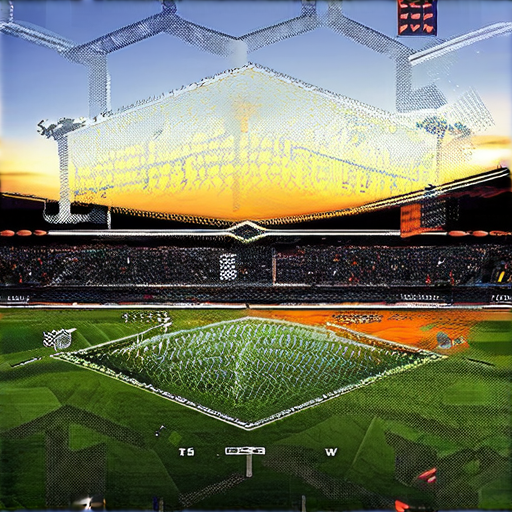The Liverpool Football Club, renowned for its rich history and global fanbase, has consistently showcased a unique tactical approach that sets them apart from their competitors. Over the years, Liverpool’s ability to dominate matches and secure major trophies has been attributed to their innovative strategies, blending effective formations, precise playstyles, and a cohesive tactical preset. From Jurgen Klopp’s influence to the implementation of the slot system, Liverpool’s tactical evolution continues to redefine modern football.

What Tactics Does Liverpool Use?
Liverpool FC employs a dynamic and evolving approach to football, blending creativity, technical ability, and tactical intelligence. Their strategy is built around a few key principles that have made them a dominant force in English football.
- Vertical Offensive Transition: Liverpool’s attacks often start with a quick horizontal pass or diagonal run, creating space for wingers to advance into dangerous areas. This vertical movement is supported by precise passing and incisive dribbling, allowing them to break defenses quickly.
- Possession-Based Play: The team prioritizes retaining possession through sharp one-twos, intricate link-ups, and intelligent off-the-ball movements. Their midfielders excel at recycling possession, maintaining tempo, and launching counter-attacks.
- Defensive Organization: Liverpool’s defense is organized and disciplined, focusing on compactness and quick transitions. The full-backs are often given license to join attacks, adding width and overlap, while the center-backs maintain a solid block to disrupt opponents’ rhythm.
- Set-Piece Expertise: Liverpool has a strong history of scoring from set-pieces, thanks to their aerial threat and ability to exploit defensive weaknesses. Their delivery from corners and free-kicks is among the best in the league.
- Intense Pressing: Liverpool’s high press is a cornerstone of their game, forcing opponents to play quickly and make mistakes. The intensity of their pressing disrupts opposition builds and creates turnovers in dangerous areas.
Liverpool’s tactics are further enhanced by their ability to adapt to different opponents and playing styles. Whether it’s dominating possession against lesser teams or exploiting defensive vulnerabilities in bigger games, Jurgen Klopp’s side always looks for ways to impose their style on the match.
What is the Liverpool Tactical Formation?
Liverpool FC employs a flexible tactical approach under manager Jürgen Klopp, often utilizing a 4-2-4 structure during possession. This formation emphasizes fluidity, pressing, and quick transitions, reflecting Klopp’s philosophy of high-intensity play.
Key Components of Liverpool’s Tactical System
- Central Midfield Duo: Dominated by Fabinho and Thiago Alcântara, these two midfielders excel in controlling the tempo of the game, breaking up opposition plays, and initiating attacks.
- Wide Midfielders: Players like Mohamed Salah and Andy Robertson operate in advanced positions, providing width and overlapping in attack, while also contributing defensively.
- Central Defender Role: Virgil van Dijk and Joël Matip often sit as the third center-back, ensuring defensive stability and organizing the backline effectively.
- Full-Backs as Attackers: Robertson and Trent Alexander-Arnold frequently join the attack, adding versatility and width to Liverpool’s offensive play.
Recent Tactical Adjustments
In the match against Manchester City, Liverpool utilized a 4-2-4 structure, with central forwards like Cody Gakpo and Alexis Mac Allister dropping into midfield to overload City’s defensive midfield trio. This approach highlighted Klopp’s ability to adapt tactics based on the opponent’s strengths.
Alternative Formations
Liverpool has also been known to deploy variations like the 4-3-3 or 3-4-3 systems depending on the opposition. These formations emphasize defensive solidity while maintaining attacking intent, showcasing Klopp’s tactical versatility.
The success of Liverpool’s tactics is evident in their ability to dominate possession, press effectively, and maintain a high rhythm, making them a formidable force in English football.
Read more about Liverpool’s tactical evolution on The Anfield Talk
What Tactical Preset Does Liverpool Use?
Liverpool’s tactical approach is characterized by a high-pressing, fluid 4-3-3 formation. This system emphasizes versatility and adaptability, allowing the team to switch between defense and attack seamlessly. The key components of their setup include:- **High Pressing Defense**: Liverpool often employs a high press to disrupt opponents’ build-up phases, forcing turnovers in dangerous areas.- **Fluid Formation**: The 4-3-3 structure allows for positional interchange, enabling players to move into attacking roles during transitions.- **Wing-Back System**: Utilizing wing-backs who are primarily attackers, Liverpool covers the full width of the pitch effectively.- **Double Pivot in Midfield**: A pair of central midfielders work together, one focusing on defense while the other contributes offensively.- **Attacking Strategy**: The team uses a diamond formation with two striker options, allowing for diverse attacking threats and quick transitions.This tactical approach reflects Liverpool’s dynamic style, prioritizing quick transitions and high-intensity play.
Playstyle of Liverpool FC
Liverpool FC employs a dynamic and versatile playing style that combines high pressing, fluid transitions, and attacking intent. Their approach is characterized by:
- High Pressing: Liverpool’s midfielders excel at quickly closing down opponents, regaining possession, and transitioning into attacks.
- Overlapping Full-Backs: Their full-backs, such as Andrew Robertson and Trent Alexander-Arnold, frequently overlap to provide width and support in the final third.
- Central Midfield Flexibility: The midfield often features two holding midfielders, allowing for stability and cover, while one can push forward into attacking positions during set-pieces or counter-attacks.
- Geometric Flexibility: The team adapts its formation and roles based on the opponent, often shifting between a 4-3-3 and a 4-4-2 setup depending on the game situation.
- Defensive Aggressiveness: Full-backs are encouraged to advance forward, creating numerical superiority in attack, while the center-backs maintain a compact defensive block to prevent counter-attacks.
This blend of defensive solidity and offensive creativity allows Liverpool to control games and exploit opposition defenses, making them a formidable force in English football.
Key Components of Liverpool’s Tactical Strategy
Liverpool’s tactical approach is built on several interconnected components that make their gameplay distinctive and effective. Here’s a breakdown of the primary elements:
1. High Pressing and Intense Transition
Liverpool employs a high-intensity pressing strategy, where every defender presses high up the pitch to disrupt opponents’ build-up play. This pressure forces the opposition to make rushed decisions, often leading to turnovers. The quick transition from defense to attack is seamless, with midfielders like Fabinho and Thiago Alcantara excelling at breaking up plays and launching counterattacks.
2. Midfield Creativity and Pivot Play
The midfield is the heart of Liverpool’s strategy. Players like Fabinho, Thiago Alcantara, and sometimes Jordan Henderson operate in central roles, acting as pivot points to control the game. Their ability to dictate play, spray long balls into the final third, and carry the ball forward creates constant threats. This creativity allows Liverpool to break down compact defenses.
3. Full-Back Involvement
Liverpool’s full-backs are not just defenders; they are attackers too. Trent Alexander-Arnold, Andy Robertson, and others regularly contribute to goals through overlapping runs and crosses. Their ability to join the attack transforms them into dual-threat players, stretching the opponent’s defense and creating numerical superiority.
4. Exploiting Defensive Gaps
Liverpool’s forwards, particularly Sadio Mané, Roberto Firmino, and Mohamed Salah, are adept at identifying and exploiting defensive gaps. Their movement off the ball and ability to interchange positions create confusion for opponents, allowing them to break into dangerous areas.
5. Set-Piece Expertise
Liverpool has a strong history of converting set-pieces into goals. Whether it’s corner kicks, free-kicks, or throw-ins, players like Virgil van Dijk and Andy Robertson are consistently dangerous. This expertise ensures that even when possession is lost, Liverpool can still threaten the opponent’s goal.
6. Communication and Organization
Liverpool’s ability to communicate on the field is unmatched. Leaders like Henderson and Van Dijk ensure everyone is in the right position, maintaining shape during both defense and attack. This organizational excellence allows Liverpool to dominate possession and control large portions of the game.
Related Articles
– Exploring Liverpool’s Style of Play– Understanding High Pressing TacticsThese components work synergistically, making Liverpool a formidable force in modern football. Their ability to adapt and evolve while staying true to their identity ensures they remain a dominant team in European football.
Exploring Liverpool’s Tactical Strategies and Formations
Liverpool FC is renowned for its dynamic and evolving tactical approach, combining high-intensity pressing, fluid attacking play, and solid defensive organization. Their strategies have consistently positioned them as one of the most competitive teams in English football.
Defensive Setup
Liverpool’s defense typically operates in a compact 4-man backline, focusing on quick transitions and preventing opponents from easily breaking down the middle. The full-backs are often tasked with supporting the central defenders, providing width, and contributing to the attack.
High Pressing and Transition
The Reds employ a high-pressing game, looking to disrupt opponents’ rhythm and force turnovers. Once possession is regained, they quickly move forward, utilizing their pace and creativity in the final third to exploit defensive gaps.
Midfield Dynamics
Liverpool’s midfield is a key area where they balance defense and attack. Players like Jordan Henderson and Thiago Alcantara excel in box-to-box roles, providing energy and covering space. Further forward, more attacking-minded midfielders can drop deep to collect the ball and launch counterattacks.
Attacking Play
Liverpool’s attack thrives on quick decision-making and interchange between attackers. Their forwards, such as Mohamed Salah, Sadio Mané, and Roberto Firmino, are adept at exploiting space and delivering decisive finishes. The team’s ability to switch between phases seamlessly is a hallmark of their play.
Managerial Influence
Jurgen Klopp’s impact on Liverpool’s tactics has been transformative. His emphasis on high-energy pressing, fluid movements, and an aggressive pressing style has redefined the team’s identity. Klopp’s leadership has also fostered a culture of resilience and adaptability.
Evolving Formations
While primarily using a 4-3-3 system, Liverpool has adapted to different opposition and situations. They sometimes deploy a 4-4-2 or 3-4-3 formations, depending on the game’s demands. Flexibility in formation allows Klopp’s side to dominate possession and dictate play.
Conclusion
Liverpool’s tactical strategy revolves around a blend of high-pressing defense, rapid transitions, and attacking flair. Their ability to adapt to various challenges and maintain a strong defensive base ensures they remain a formidable force in English football. By combining individual talent with cohesive teamwork, Liverpool continues to set the standard for modern football tactics.
For more detailed insights into Liverpool’s playing style and formations, visit their official website: Liverpool FC .




0 Comments